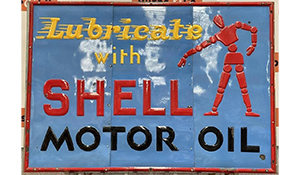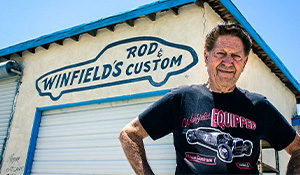1967 Shelby GT500SE Super Snake
THE most expensive Ford Mustang ever. Yes, of the millions of Pony Cars produced since the icon’s birth in 1964, one must top the price charts.
And, as you’d expect, it’s a rare one. Ludicrously rare in fact.
Just a single 1967 Shelby GT500 Super Snake was ever made, so when it came up for auction at Mecum’s Spring Classic in Indianapolis in 2013 there were numerous well-heeled muscle car fans sporting itchy bidding fingers.
The result? US$1.3 million, plus a 7% seller’s commission, to shatter the record for the highest price paid at auction for a Mustang.
So the seller got shed loads of cash and the new owner had a nailed-on blue chip investment rather more fun than stocks and shares, but what about the rest of us?

You could build your own of course, but such a replica is hardly the real deal. The closest you’ll get to the true ’67 Shelby GT500 Super Snake – unless you win lotto and convince the owner to sell his one-off original – is with a continuation special.
The late Carroll Shelby was no mug when it came to making money out of the desirability of his products, and at the turn of the millennium Shelbys were in high demand.
The remake of Gone in 60 Seconds hit cinema screens in 2000, and its star (sorry Nicolas Cage, not you) was a 1967 Ford Mustang fastback depicted as a Shelby GT500 and memorably called “Eleanor”.
The people, quite understandably, wanted one.

Continuing a legend
So in 2001 Carroll Shelby teamed with a Texas company called Unique Performance, granting it license to build continuation GT500 Super Snakes in the style of the ’67 original and looking very similar to the Eleanor film star.
Build it and they will come, right? What could possibly go wrong?
Lots, as it turned out. Unique Performance experienced financial difficulties (or was a corrupt organisation depending on who you believe), and many of these Continuation Super Snakes were only half built or not started when the company went under.
Full information is scant, but it appears only 43 GT500E and GT500SE (as they are known) have been made and listed in the Shelby Unified Registry, despite an original plan for 75 to be built.

Which brings us to this car, a 1967 Shelby GT500SE in right hand drive. Its owner, Iain “Kip” Kippen, not only gets to pilot this recently-built facsimile of the hero 1967 car, but has an all-important letter from Carroll Shelby Licensing, Inc. confirming it features a Super Snake package and is one of the 43 to be registered in the official worldwide registry for all Shelby vehicles. Integral paperwork in this era of fakes and replicas.
“After the US company went bust Shelby Licensing offered licenses to approved Shelby repairers to build the rest of the GT500SE continuation cars,” Kip said.
“I was looking for a 1969 Mustang Boss at Queensland Musclecar on the Sunshine Coast, and the owner had his continuation GT500SE there. He told me he had license to build one more, I was impressed with his work, so I commissioned him to make it for me.”

Kip believes these two Sunshine Coast-assembled Shelbys are the only two right hand drive examples of these continuation cars, upping the rarity stakes at this already very exclusive muscle car party.
All authentic
The rules for building these Continuation Super Snakes are very strict; as you’d expect to get the seal of approval from Shelby.
For starters it had to have the Shelby Performance big block V8 with a supercharger. You can’t have these things pottering around without otherworldly power. That’s just not the Shelby way.
All the components to build a Continuation Super Snake – from suspension to brakes to lighting - had to come to Australia out of the USA from Shelby or someone working on their behalf.
An expensive process, yes, but that’s the price of authenticity.

Kip’s car to be officially right-hand-drive converted into a continuation Shelby was a 1967 Mustang with 390 Big Block engine, apparently in great condition.
Regardless, in went a new Shelby-stamped 427 FE (7.0-litre) aluminium engine block complete with its race-spec internals, giant Vortech supercharger and the associated plumbing which somehow fits under the pin-attached striped bonnet.
Power hungry
Kip said that when the car was dyno tuned it realised 770bhp (574kW) at the flywheel, 560bhp (418kW) at the rear wheels and a stonking 1000Nm of torque.
This may be a 1967 car in appearance, but these figures are outrageous even by modern supercar standards.
This Super Snake uses a hardcore Tremec T5 five-speed manual gearbox with short shift kit, Currie 9-inch rear axle with Torsen differential and a multitude of race-spec gear to keep things from exploding and melting under such power and twist.

The leaf-sprung rear obviously had to go, replaced with a coilover suspension setup all round, plus Shelby disc brakes with Wilwood calipers to try and haul this speed monster to a stop.
Wheels are wonderful period-correct 18-inch American Racing Equipment with knock-on hubs, running 245/35 Yokohamas up front and mighty 315/30 rubber for those deep-dish rears.
As for the body, has a Mustang ever looked tougher? Kip says the steel inner arches needed modifying to fit the fat rear wheels under, while the authentic Super Snake body kit is all fibre glass. Highlights are the bonnet’s giant bulge, the side exit exhaust, chrome fuel filler cap, PIAA central-mounted front lights, bullet-style side mirrors and giant intakes ahead of the rear wheels.
Then there are those signature Shelby rear lights: elongated chunks of red with an iconic Shelby badge separating them.
This rear end will be the only view most will ever get.
Kip said practically the only say he had for the car’s build was its colour.
“It’s close to the Eleanor colour from Gone in 60 Seconds, but mine’s a cleaner graphite with a titanium stripe,” he said. So stunning are these Super Snakes that there’s probably no “wrong” colour, but this dark silver is probably more right than most.

Cabin fever
The superb right-hand drive cabin has you weak with muscle car nostalgia.
A three-spoke steering wheel with wood surround has the iconic Cobra badge at its centre, the gear shift knob is retro black and white with a Cobra motif, while the three billet pedals also feature the famous snake ready to strike.
The beautiful metal dash panel houses black Carroll Shelby gauges, and the great man himself personally signed the panel above the glove box, indicating his mark of authenticity for these continuation specials.
Enchantingly it feels like a brand new car inside, with all the features suggesting you’ve been trapped in a blissful muscle car time warp.
Black vinyl trim looks, feels and smells wonderfully 1960s, while the seats are leather coated buckets (embossed with Shelby’s autograph), that are well bolstered for performance driving.

Snakes alive!
Which is what these continuations are made for. “I’ve never driven a car like it,” Kip said, even though he’s no stranger to performance with a Cobra replica and Aston Martin Vantage in his collection.
“If I go more than half throttle it just lights the rear wheels up. In first, second or third if you go past half throttle it breaks traction, and it’s a bit like driving on ice.
“But there’s enough torque that I can drive it around town in third or fourth gear, but when the supercharger comes in at about 3500rpm you just need to be so careful with it. It’s certainly not a daily driver, and the clutch is quite heavy, but I really don’t have a problem with it. It’s a wonderful toy, and a great show car.”
Some enthusiasts frown at replicas and even continuation specials such as this, but they must be mad.
With only one “true” Shelby GT500 Super Snake in existence – no doubt hidden away in a collector’s climate controlled garage somewhere – licensed continuation cars are a blessing for muscle car fans and their fortunate owners.
We have two in Australia prowling Queensland streets, ensuring we get our own high powered and very beastly slices of authentic Shelby to enjoy.

The most expensive Mustang ever sold at auction was the one-off 1967 Shelby GT500 Super Snake, which realised US$1.3 million (plus a 7% seller’s commission) at Mecum’s Spring Classic auction in Indianapolis in May 2013.
It was originally built to showcase Goodyear’s new Thunderbolt tyres: the budget choice rather than rubber specifically made for high power muscle cars.
Members of the media would be invited along to see how the tyres could sustain high speeds for an extended period, and a Shelby GT500 was deemed the perfect car for the task.
But why not put a Le Mans 24 Hour-winning racing engine in one to really up the ante?
So the Super Snake was created with a Ford GT40 Mk II 427 racing engine built specifically for the car, it was given an external oil cooler, stiffer springs and shocks and unique Le Mans Blue triple bonnet stripes over its white body.

Despite its race track credentials, it was duly fitted with 15-inch “family car” Goodyear Thunderbolt whitewall tyres for its high-speed demonstration runs.
These were overinflated with nitrogen (to prevent overheating) and Carroll Shelby himself took the car to 170mph (274kmh) around Goodyear’s oval track.
The skinny tyres apparently performed excellently for the 500-mile test at an average speed of 142mph (229kmh).
The marketing venture over, Shelby’s ultimate plan was to make 50 more 427-powered Super Snakes for sale to the public, but with a price tag of nearly US$8000 at the time (over twice the basic price of a normal GT500), it proved too expensive.

The sole example was sold in 1967 (for $5000) to a pair of airline pilots who used it for drag racing, before passing through a few other owners and ultimately ending up with Richard Ellis, a collector of rare Mustangs in Illinois.
He carried out light restoration work, focusing on returning it to its tyre test specification. He even sourced possibly the last surviving set of skinny Goodyear Thunderbolt whitewalls to grace its Shelby 10-spoke aluminium wheels.
Returning this unique Shelby to its original setup clearly worked. That record price for a Mustang achieved four years ago has yet to be beaten.

Words: Iain Curry
Photos: Iain Curry












